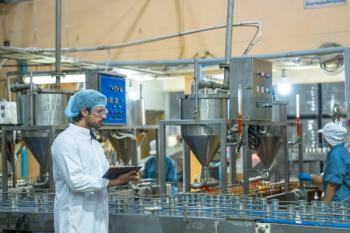
Best of the Week: Inter-Instrument Variability, Microplastics in Iranian Soft Drinks
Key Takeaways
- Inter-instrument variability in spectroscopy affects model accuracy, requiring calibration transfer techniques like DS, PDS, and EPO, with future focus on machine learning solutions.
- Microplastic contamination in Iranian soft drinks, Arctic waters, and beet sugar highlights significant food safety and environmental concerns, necessitating improved industrial practices.
Top articles published this week include a tutorial about calibration transfer techniques and inter-instrument variability, a couple news articles about quantifying microplastics, and a feature on the “pressure to publish.”
This week, Spectroscopy published a variety of articles highlighting recent studies in several application areas, including environmental analysis, machine learning, and artificial intelligence (AI). Key techniques highlighted in these articles include attenuated total reflectance Fourier transform infrared (ATR–FT-IR) spectroscopy and Raman spectroscopy. Happy reading!
In Part III of our series “Unsolved Problems in Spectroscopy,” inter-instrument variability is explored. Inter-instrument variability affects spectroscopic model deployment because of hardware-induced spectral variations, necessitating calibration transfer for model accuracy (1). Sources of spectral variability include wavelength alignment errors, spectral resolution differences, and detector noise variability, impacting model performance (1). Calibration transfer techniques like direct standardization (DS), piecewise direct standardization (PDS), and external parameter orthogonalization (EPO) offer partial solutions but have limitations, such as vulnerability to nonlinear distortions and complexity (1). Future research focuses on machine learning-based domain adaptation and physics-informed neural networks to enhance model robustness and transferability.
A study published in Results in Engineering found microplastics in all tested soft drinks and non-alcoholic beverages in Iran. The research team analyzed 50 samples using Raman spectroscopy, identifying polyethylene terephthalate (PET) as the main contaminant. Microplastic concentrations ranged from 9.12 to 31.94 particles per liter, with fibers comprising 76% of particles, most under 50 µm in size (2). Other polymers included polypropylene, polystyrene, and polyethylene (2). Blue and transparent particles predominated, suggesting contamination from bottles or bottling processes (2). The study highlights the widespread presence of microplastics in consumable liquids and underscores potential food safety and public health concerns globally.
A recent study published in Chemosphere assessed microplastic pollution in the western Arctic Ocean, revealing that even remote polar waters are contaminated. Researchers collected 324 water samples from depths of 9–297 meters across the Bering Strait, Chukchi Sea, and southern Beaufort Sea. Microplastics were detected in 94.4% of samples, averaging 0.06 particles per liter, primarily small, blue, fibrous polyolefins (3). Most particles were concentrated in the Polar Mixed Layer, with others in deeper halocline and intermediate layers (3). Findings indicate long-range oceanic transport, alongside local activities, drives contamination, highlighting risks to Arctic ecosystems and Indigenous communities reliant on marine resources.
A recent study in Process Safety and Environmental Protection found microplastic contamination in commercially available beet sugar products. Researchers Mehmet Yurtsever and Mehmet Ali Cuevelek analyzed 15 white, brown, and molasses sugar products using attenuated total reflectance Fourier transform infrared) ATR FT-IR spectroscopy, confirming 342 microplastic particles, primarily polyethylene, polypropylene, PET, and polystyrene (4). White sugar contained the highest particle counts, likely due to additional refinement steps. The team suggests industrial processing and packaging as the main contamination sources (4). These findings highlight the potential for microplastics to enter the human food chain, raising questions about food safety and prompting reconsideration of plastic use in sugar production globally.
In this feature article, we take a deep dive into the pressure researchers face when it comes to publishing their work. This is especially true for tenure-track faculty, with publication rates peaking before tenure and diverging post-tenure across disciplines (5). The slow work movement emphasizes pacing research to foster creativity and innovation, countering the fast-paced, high-pressure environment (5). Collaboration is essential for scientific breakthroughs, requiring time and space for informal connections and sustained effort (5). Organizations must support researchers by encouraging risk-taking and fostering a culture of collaboration to unlock scientific teams' full potential.
References
- Workman, Jr., J. Universal Calibration: Can Models Travel Successfully Across Instruments? Spectroscopy. Available at:
https://www.spectroscopyonline.com/view/universal-calibration-can-models-travel-successfully-across-instruments- (accessed 2025-08-15). - Workman, Jr., J. Plastic in Your Pop: Spectroscopy Reveals Microplastics in Iran’s Popular Soft Drinks. Spectroscopy. Available at:
https://www.spectroscopyonline.com/view/plastic-in-your-pop-spectroscopy-reveals-microplastics-in-iran-s-popular-soft-drinks (accessed 2025-08-14). - Wetzel, W. Microplastic Analysis in the Arctic Reveals Sources of Influx. Spectroscopy. Available at:
https://www.spectroscopyonline.com/view/microplastic-analysis-in-the-arctic-reveals-sources-of-influx (accessed 2025-08-14). - Workman, Jr., J. Plastic in Sugar? Spectroscopy Reveals Microplastic Contamination in Beet Sugar. Spectroscopy. Available at:
https://www.spectroscopyonline.com/view/plastic-in-sugar-spectroscopy-reveals-microplastic-contamination-in-beet-sugar (accessed 2025-08-14). - Hroncich, C. Time Well Spent: Productivity with Purpose in Research. Spectroscopy. Available at:
https://www.spectroscopyonline.com/view/time-well-spent-productivity-with-purpose-in-research (accessed 2025-08-14).
Newsletter
Get essential updates on the latest spectroscopy technologies, regulatory standards, and best practices—subscribe today to Spectroscopy.





